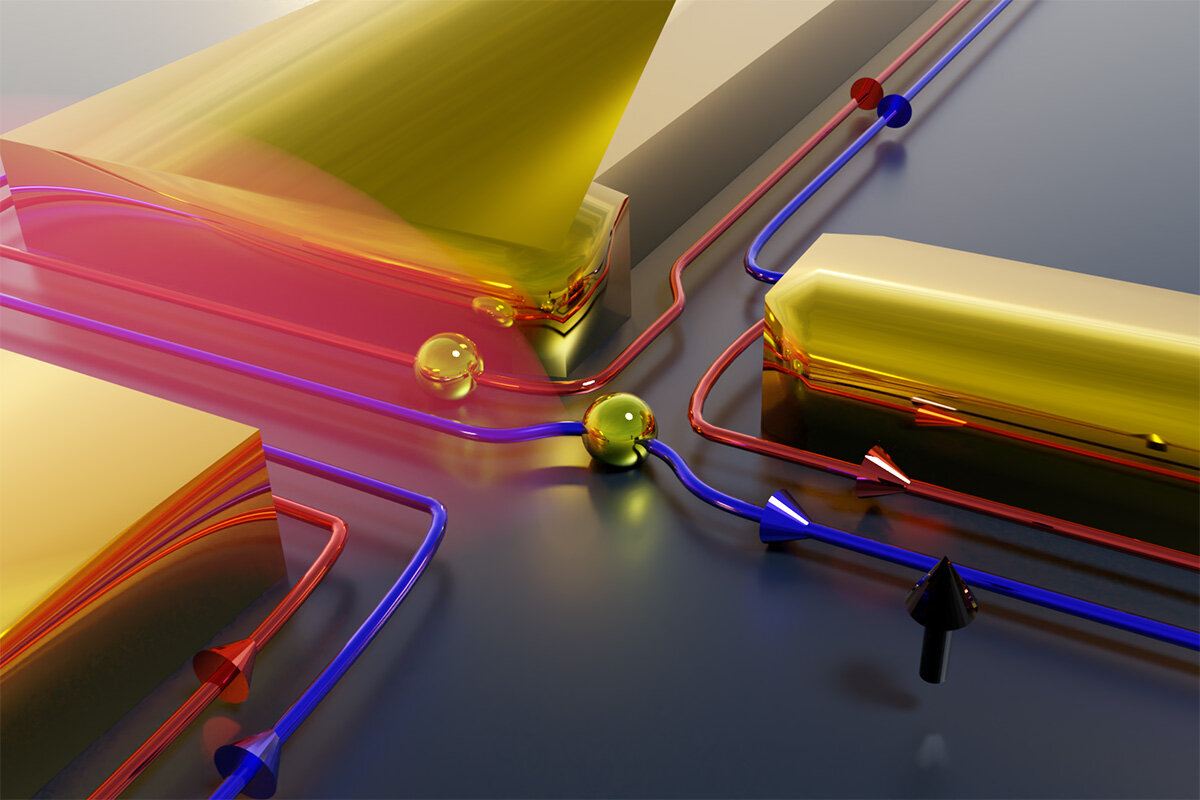
When you think of empty space, you almost certainly imagine a vacuum in which nothing interesting can ever happen. However, if we zoom in to tiny length scales where quantum effects start to become important, it turns out that what you thought was empty is actually filled at all times with a seething mass of electromagnetic activity, as virtual photons flicker in and out of existence. This unexpected phenomenon is known as the vacuum fluctuation field. However, because these fluctuations of light energy are so small and fleeting in time, it is difficult to find ways for matter to interact with them, especially within a single, integrated device.
In a study published this month in Nano Letters, researchers from the Institute of Industrial Science, The University of Tokyo succeeded in fabricating a single nanoscale hybrid system for doing exactly this. In their design, a quantum point contact connects a single on-chip split-ring resonator with a two-dimensional electron system.
The split-ring resonator, which is a nanosized square metallic loop with a tiny gap, responds most strongly when excited with specific resonant frequencies of terahertz electromagnetic radiation. While conventional optical measurements previously required arrays with many resonators, the team is now able to detect ultrastrong coupling using a single terahertz split-ring resonator connected to 2D electrons.
To make quantum information processing more feasible in the future, it is important to be able to determine the quantum state using a simple, single resonator structure. This goal is also made more achievable using electrical, rather than optical, sensing, which is performed using the quantum point electrical contact.
"Matter that can interact with vacuum fluctuations of the electromagnetic field is said to be in the ultrastrong coupling regime", says first author of the study Kazuyuki Kuroyama. The experiment showed that the current signal in the quantum point contact could be used to detect the ultrastrong coupling of the single split-ring resonator with the 2D electron gas. In addition, electrical current could be measured in the quantum point contact, even without external radiation being applied. Modulations in the current allowed the researchers to conclude that interactions between the 2D electron gas and the vacuum field fluctuations of the resonator are still taking place in the absence of terahertz radiation.
"Our findings may allow for highly sensitive quantum sensors that operate based on the coupling between vacuum fluctuations and an integrated hybrid quantum device," speculates Kazuhiko Hirakawa, senior author.
In addition to learning more about the fundamental laws of nature at very small scales, the findings of this study might be used to help develop future quantum computers that can make use of the usual phenomena to process or transmit data.
The article, "Electrical detection of ultrastrong coherent interaction between terahertz fields and electrons using quantum point contacts," was published in Nano Letters at DOI: 10.1021/acs.nanolett.3c02272.
Research Contact
Kazuhiko Hirakawa, Professor
Institute of Industrial Science, the University of Tokyo
Tel:+81-3-5452-6260
E-mail:hirakawa(Please add "@iis.u-tokyo.ac.jp" to the end)
